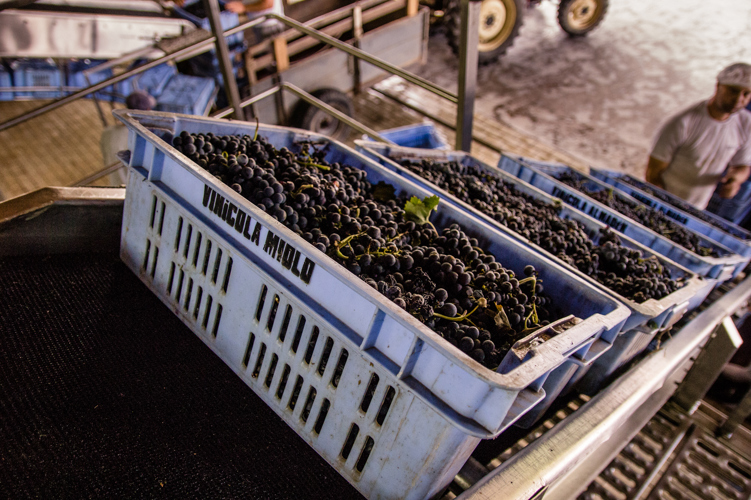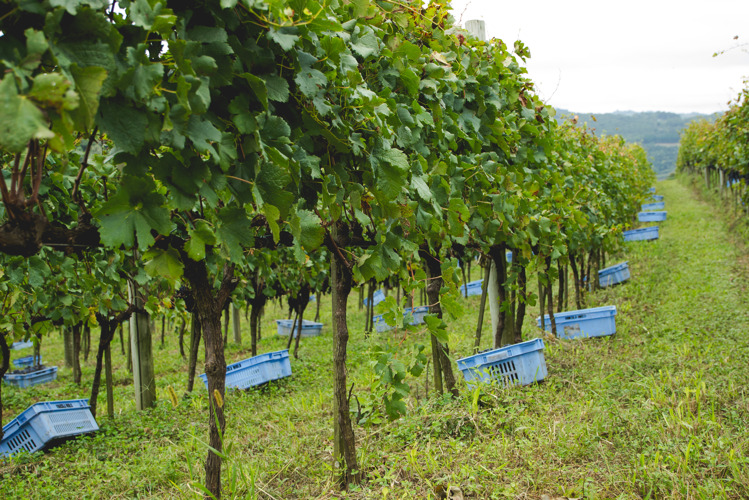Harvest 2019: Brazil and Uruguay
Freshness and vibrance could be the hallmarks of the latest vintage from this increasingly quality-focused region of South America.
Despite of a mixed bag of growing conditions for our Brazilian and Uruguayan producers, they remain optimistic that 2019 will be another successful vintage. From abundant rainy days to disease in the vines, these countries certainly saw their fair share of challenges during 2019. But favourable conditions at the end of the vintage meant they were able to maintain the fantastic quality we've come to expect from their wines in recent years. There's some indication too that the cold and wet conditions at the start of the vintage will result in high levels of freshness and acidity in these 2019 wines.
Bibendum buyer for Brazil and Uruguay, Joseph Arthur, says, "Compared to 2018's stellar vintage in Brazil and Uruguay, 2019 saw much more fluctuation of temperature and rainfall levels. January's wet conditions meant that considerable volume was lost in both countries, with Brazil in particular losing 60m kilograms overall. Despite this, with conditions balancing out in the later half of the vintage, we're hopeful that the 2019 wines will have extra levels of complexity, freshness and flavour."
Brazil: Miolo
A difficult harvest for white grapes, but one of the best winters for reds

Miolo certainly felt the challenges of nature throughout this year's harvest. While some areas managed to maintain their dry, warm climates, others were significantly affected by heavy rainfall. This led to a decline in volumes - which had already fallen by 12% between 2017 and 2018.
Vale dos Vinhedos, Brazil's primary winemaking region, saw fairly typical weather conditions. Wet conditions and cloudy days maintained a cool climate in the vineyards, ideal for the production of white and sparkling wines. The quality of medium-structure red wines is also expected to be good.
The winemaking region of Campanha Gaucha saw above average rainfall throughout the earlier summer months, which affected fruit set and subsequent yields. Conditions for red varietals, on the other hand, were reported to be good in comparison, with higher temperatures throughout the latter half of summer contributing to ripe, well-balanced red wines.
Vale do Sao Francisco saw an excellent all-round harvest, with growing conditions for red wines reported to be some of the best in recent years. Grapes that benefited in particular from the generous winter sunshine were Syrah, Mourvedre and Grenache. Average levels of rain throughout February and March meant that sparkling varieties also did well.
Uruguay: Altos de Jose Ignacio
A vintage with challenging conditions, saved by the quality of the terroir

Winemaker German Bruzzone reported a challenging vintage, but one characterised by the exemplary conditions of the terroir.
High temperatures and abundant rainfall throughout budding and flowering triggered considerable growth in spring. However, lower than average sunshine throughout December and January meant these wet conditions continued longer than is usual, leading to some disease pressure. Luckily, good soil drainage - combined with an influx of fresh breezes from the Atlantic - meant that moisture levels were kept low, preventing the spread of disease.
Sunshine levels picked up at the end of January and stayed consistently high throughout February. This, combined with cool nights and low fruit volume, meant red grapes could develop excellently in terms of ripeness, flavour and colour. Rainfall throughout these months was lower than average, and as a result the vines were able to fully recover from the wetter than average conditions of December and early January.
Temperatures dropped considerably at the end of February and stayed consistently at this level throughout March, ensuring a good level of natural acidity in the wines.
A warm growing season overall allowed fruit to mature well, with a fresher than average summer ensuring more pronounced acidity, lower sugar content and good colour in the wines.
German states, "Our 2019 white wines are characterised by a balanced freshness and elegance that are complemented by a moderate alcohol level, thanks to the conditions experienced at the beginning of our harvest."
"The reds are complex and fresh, with a velvety texture and good colour, added to a remarkable varietal typicity."
*Please drink responsibly


